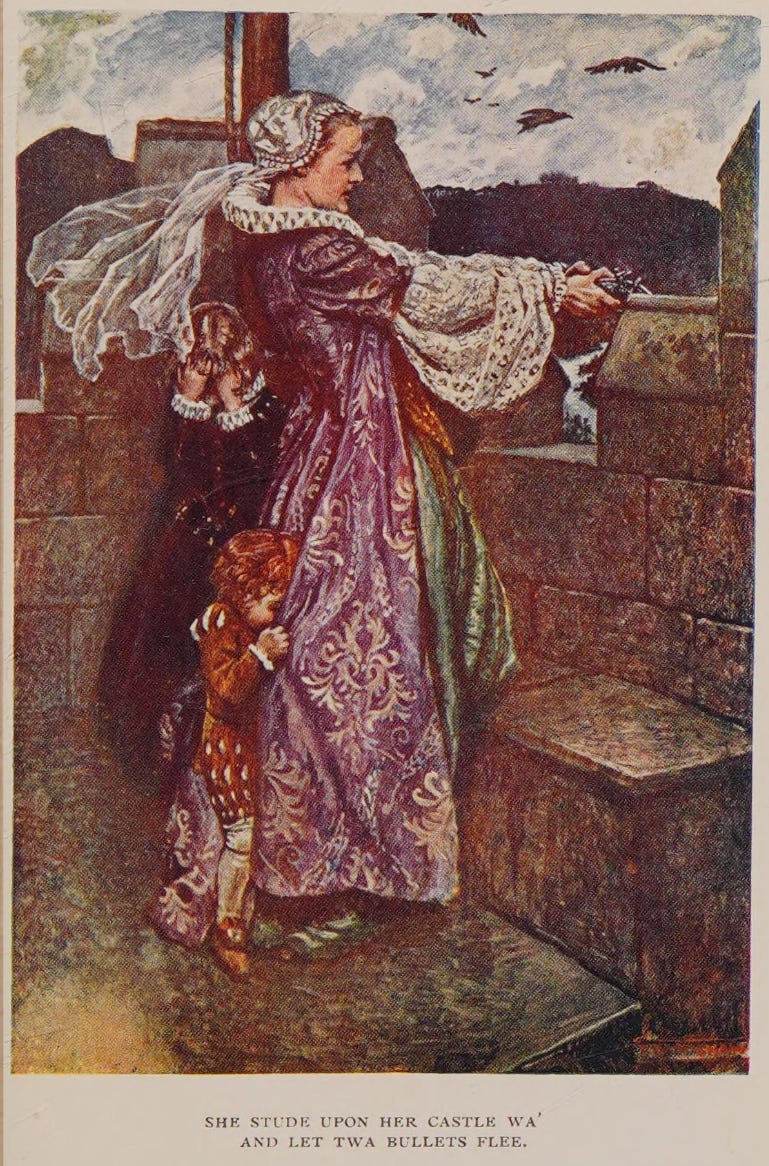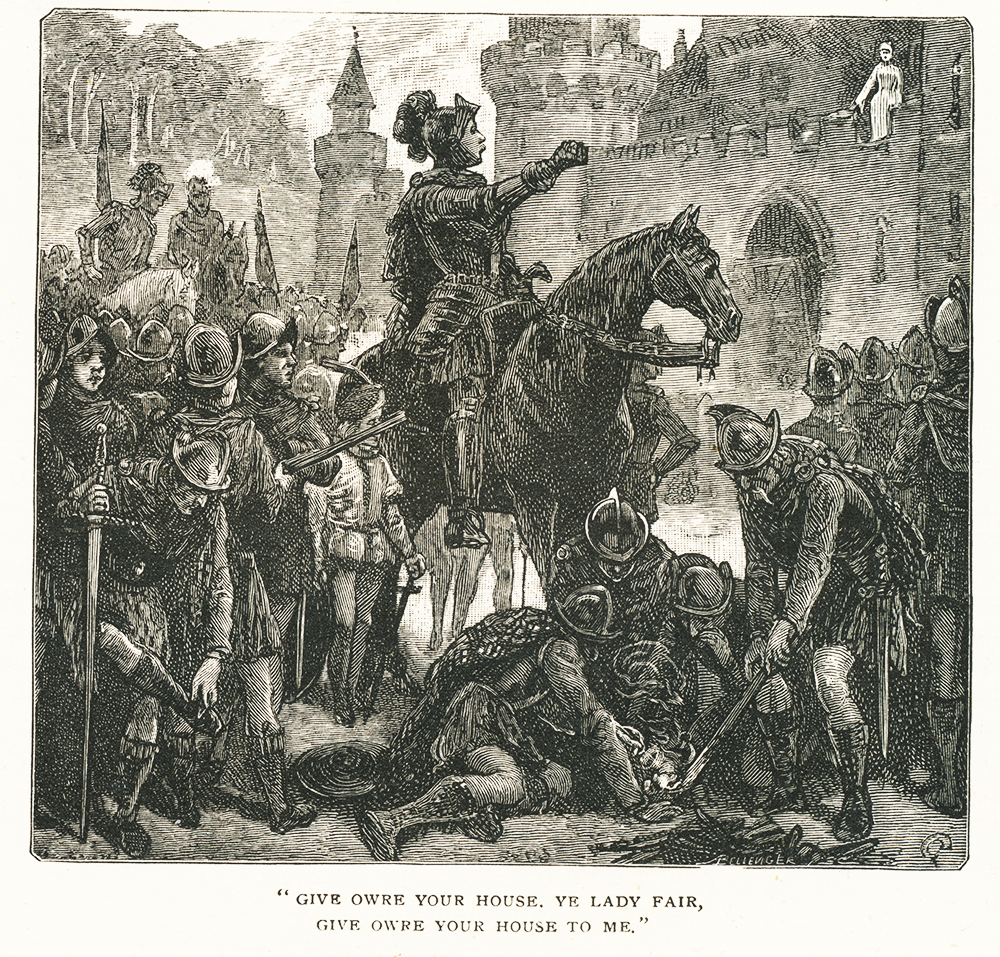ROUD 80: Edom o Gordon
AKA: Adam Gordon or The Burning of Cargarff, Adam Gorman, Sick Sick, Captain Car, Adam McGordon

This is yet another ballad that is centred around true events, namely the burning of Corgarff Castle. Although in the usual folk song literature it is often cited as being an inaccurate account of events, it is relatively accurate in ballad terms, only differing in a few minor details (including, as is often the case, some differences in the names and locations involved), and one main one, being the grisly episode where the small child is thrown over the castle wall and onto the tip of Adam Gordon’s sword. Otherwise, it is largely all true - in November 1571, Adam Gordon of Auchindoun did attempt to seize the castle that was the home of the Clan Forbes while all the men and soldiers were recovering from another battle, leaving it defended by women and children. These were led by Lady Margaret Campbell, clearly a formidable woman who was not going to give up the castle without a fight, and she did, as the song says, fire shots from a pistol wounding several of Gordon’s men, including Captain Thomas Ker. This enraged Gordon and he ordered the castle to be burned, killing almost everyone inside.
Music
There is a playlist of ten songs (a few more entries than currently listed on the Mainly Norfolk page). This ballad has almost never been found outside Scotland (with a couple of corrupted examples found in New England in the 1940s).
One thing not in the playlist are the James Madison Carpenter collection of (rather crackly) cylinder recordings of stone mason, farm labourer and school janitor Alexander Robb singing this, probably sometime in between 1928-35. You can find these recordings at the Vaughan Williams Memorial Library website.
The next earliest recording we have is this interesting little fragment recorded by Hamish Henderson in 1956, where brothers Adam and Robert Lamb try to recall the plot and some of the words.
A strikingly jolly version from 1972 can be found from long running Bristol folk stalwarts Folkal Point. They were teenagers when they recorded this, and, as a testament to the potential longevity of career afforded to folk musicians, they are still working today.
Also interesting is this version all the way from 1990s Japan - not a natural place you might expect to find a 16th century Scottish ballad, but still, it’s always good to hear a unique take.
Most of the modern versions we find today are based on the melody recorded by Ewan MacColl in 1976:
In the sleeve notes, MacColl is characteristically opaque about the melody he uses for this - it seems to match none of the printed melodies available from the usual sources. Most likely it is an original or adapted melody from another song, but please let me know if you can deduce its origin. There’s a free tea towel in it for the first person that can.
Sources
For a great history of Corgarff Castle, including pictures of the interior and accounts of life therein (including an account of the events of this ballad), this lovely Historic Scotland brochure is a thing of beauty.
As for the ballad itself its earliest incarnation, under the title “Syck, Sicke” was found in a collection of Tudor manuscripts, dating from 1579, only 8 years after the actual event. It is entry number 52 in “Tudor Songs and Ballads”, a collection of those manuscripts edited by Peter J. Seng.
An interesting version of the song with a refrain, an unusual occurrence in this era.
The ballad’s first official printing by a publisher was as a 28 page pamphlet produced by the Foulis brothers in Glasgow in 1755.

Here is Francis Child’s extensive commentary, and the seven versions of the ballad that he found.
I’m always happy to find examples of interpretive art for these ballads. One by master illustrator Byam Shaw can be found at the top of this piece. But one of my favourite ballad anthologies is “Illustrated British Ballads”, edited by George Barnett Smith (1881), which is replete with gorgeous artwork that attempts to render the dramatic events of the ballad in visual form. There are two fine examples for this song.
The first depicts Gordon’s fury at Captain Car’s injury, while Lady Forbes stands on the ramparts, clearly admiring the devastation caused by her marksmanship.
The second shows the children’s distress, as they entreat their mother to give up the castle and thereby save their young lives.
Draft Pages and Audio Guide
Keep reading with a 7-day free trial
Subscribe to Sing Yonder: A Practical Guide to Traditional Song to keep reading this post and get 7 days of free access to the full post archives.








